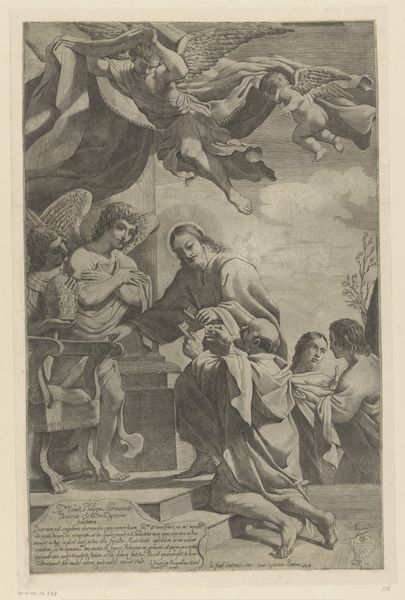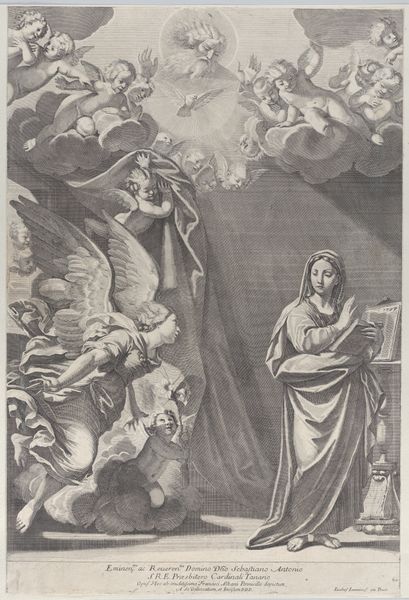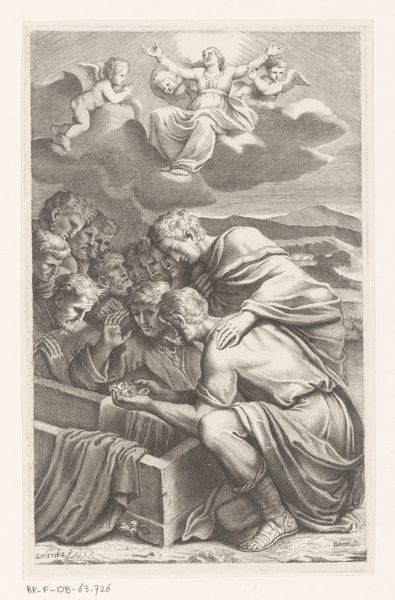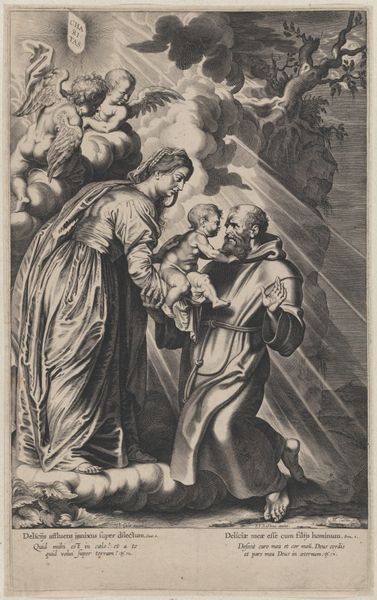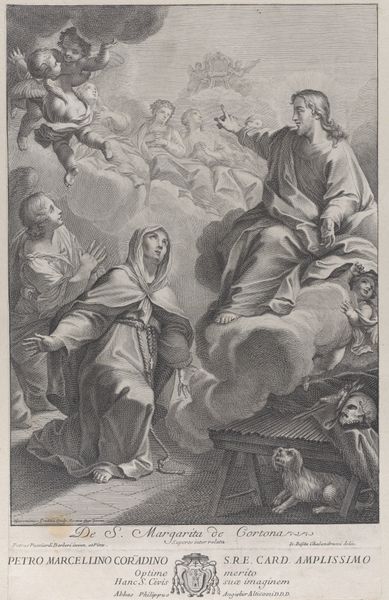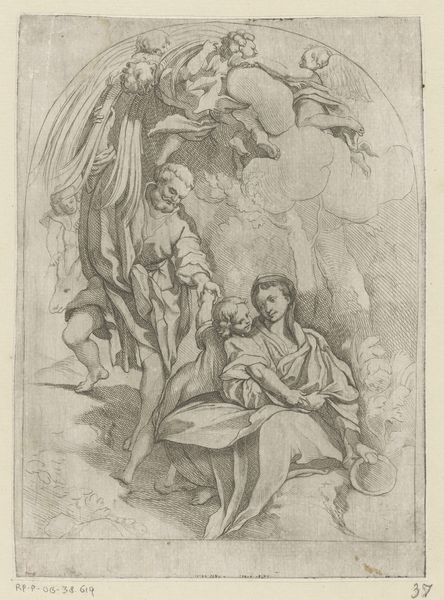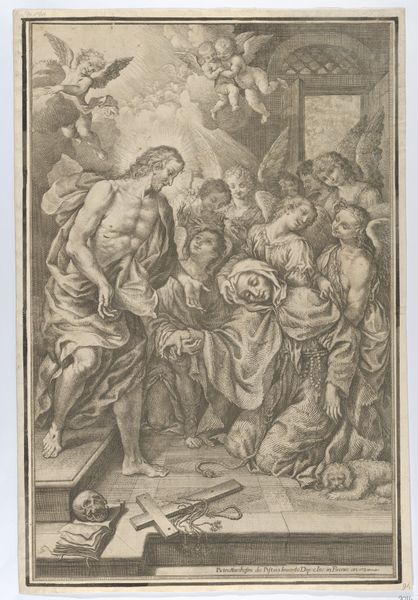
print, engraving
#
baroque
# print
#
figuration
#
history-painting
#
engraving
Dimensions: height 501 mm, width 328 mm
Copyright: Rijks Museum: Open Domain
Editor: This engraving, dating from around 1601 to 1634, is called "Petrus ontvangt de sleutels," which translates to "Peter Receives the Keys," and it's by Giovanni Battista Pasqualini. The scene has a definite Baroque flourish, and it feels charged with the drama of the moment. I’m struck by how the angels and figures are arranged to direct the viewer’s eye. What stands out to you in terms of its historical context and how it might have been received at the time? Curator: This image stages a crucial moment for the Catholic Church: Christ handing the keys to Saint Peter, thereby establishing the papal lineage. The print isn't just art; it’s a piece of visual rhetoric, actively participating in debates about religious authority and the role of the papacy. How do you think viewers contemporary to its creation would have interpreted this depiction, especially considering the Reformation? Editor: Given the Reformation and religious tensions, the engraving feels like a clear visual assertion of Catholic authority. The prominence of Saint Peter and the keys as symbols would’ve resonated strongly. I wonder about the intended audience and its accessibility beyond elite circles. Curator: Precisely. Prints like these served multiple purposes. For the educated elite, it reinforced their faith and provided a sophisticated artistic experience. More broadly, circulating such imagery allowed the Church to disseminate its doctrines to a wider audience, particularly in areas where literacy rates were lower. Think of it as a form of mass communication during that era. How might such visual arguments affect political dynamics of the era? Editor: I hadn't considered it as mass communication in that way. The idea of art being propaganda seems a little cynical, but in this case, it definitely highlights how art and faith were very politically intertwined. I never looked at Baroque art from that perspective before. Thank you! Curator: Indeed, by studying its socio-political roots we discover an artwork’s real persuasive power, and how cultural narratives can subtly affirm belief and dominion.
Comments
No comments
Be the first to comment and join the conversation on the ultimate creative platform.
